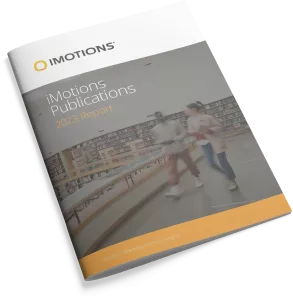-
Cognitive Load Measurement Using Arithmetic and Graphical Tasks and Galvanic Skin Response
The results of an experiment to measure cognitive load using arithmetic and graphical tasks and galvanic skin response (GSR) biometric technique are presented in this paper. 62 volunteers were recruited to take part in a laboratory experiment conducted with the integrated iMotions biometric platform. Data were collected using observations, Single Ease Question (SEQ) and NASA […]
-
Analysis of the usability and accessibility of websites in view of their universal design principles
Universal design is a strategic approach for planning and designing both the products and their environment, aimed at making a given product available to the widest number of possible users. It ensures equality for all of them and the opportunity to participate in society. This concept is also crucial in the process of designing and […]
-
Leveraging the Science to Understand Factors Influencing the Use of AI-Powered Avatar in Healthcare Services
Interests in artificial intelligence (AI) adoption have increased in many organizations. Medical providers are seeking collaborations with technology companies to provide a reliable mental healthcare service for patients. While the interest in adopting an AI-powered healthcare solution is high, it is still unclear on patients’ attitude towards adopting AI for their mental health care. Three […]
-
The Emotional Effectiveness of Advertisement
Based on cognitive–emotional neuroscience, the effectiveness of advertisement is measured in terms of individuals’ unconscious emotional responses. Using AFFDEX to record and analyze facial expressions, a combination of indicators that track both basic emotions and individual involvement is used to quantitatively determine if a spot causes high levels of ad liking in terms of attention, […]
-
Dyslexia detection in children using eye tracking data based on VGG16 network
Considering the negative impact dyslexia has on school achievements, dyslexia diagnosis and treatment are found to be of great importance. In this paper, a deep convolutional neural network was developed to detect dyslexia in children ages 7-13, based on gathered eye tracking data. The children read a text written in Serbian on 13 different color […]
-
Facial Expressions and Self-Reported Emotions When Viewing Nature Images
Many studies have demonstrated that exposure to simulated natural scenes has positive effects on emotions and reduces stress. In the present study, we investigated emotional facial expressions while viewing images of various types of natural environments. Both automated facial expression analysis by iMotions’ AFFDEX 8.1 software (iMotions, Copenhagen, Denmark) and self-reported emotions were analyzed. Attractive […]
-
Left visual field bias during face perception aligns with individual differences in reading skills and is absent in dyslexia
When looking at faces, we tend to attend more to the left visual field (corresponding to the right side of the person’s face). This phenomenon is called the left visual field bias (LVF) and is presumed to reflect the brain’s right-sided dominance for face processing. Whether alterations in hemispheric dominance are present in dyslexia, and […]
-
Trust in Automated Parking Systems
In two studies, we evaluated the trust and usefulness of automated compared to manual parking using an experimental paradigm and by surveying owners of vehicles with automated parking features. In Study 1, we compared participants’ ability to manually park a Tesla Model X and use the Autopark feature to complete perpendicular and parallel parking maneuvers. […]
-
Exploring Pie Chart Visual Properties and Design Elements: EyeTracking Approach
This research explores the impact of pie chart data representation on users by focusing on users’ performance, cognitive effort, and visual attention while employing novel eye tracking technology. This research focused on two questions centered around a difference in users’ visual attention, performance, and cognitive effort between pie chart visual properties and design variations. Two […]
-
Evaluation of Cyclist Galvanic Skin Response and Visual Attention in Commercial Vehicle Loading Zones
With growing freight operations throughout the world, there is a push for transportation systems to accommodate trucks during loading and unloading operations. Currently, many urban locations do not provide loading and unloading zones, which results in trucks parking in places that obstruct bicyclist’s roadway infrastructure (e.g., bicycle lanes). To understand the implications of these truck […]
Research Report 2023
In-depth look at the scientific landscape as powered by iMotions software, showcasing groundbreaking research and the impact of our tools in various scientific and industrial fields.

Share Your Research

850+ universities worldwide with an iMotions human behavior lab
73 of the top 100 highest ranked universities
710+ published research papers using iMotions
iMotions is used for some of the most interesting human behavior research studies carried out by top researchers around the world. Contact us to have your publication featured here.
The authors of these publications have used iMotions as a software tool within their research.
“Software should be cited on the same basis as any other research product such as a paper or a book; that is, authors should cite the appropriate set of software products just as they cite the appropriate set of papers” (Katz et al., 2020).
We therefore encourage you to cite the use of iMotions where appropriate.
How to cite iMotions
APA
iMotions (10), iMotions A/S, Copenhagen, Denmark, (2024).
Note: adjust the version and year where relevant.
5 Most Popular Blogs
Learn How to Conduct Human Behavior Research with iMotions
Publications
Read publications made possible with iMotions
Blog
Get inspired and learn more from our expert content writers
Newsletter
A monthly close up of latest product and research news





